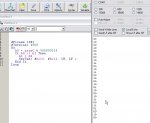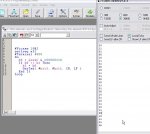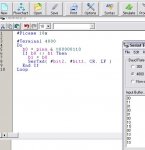hippy
Ex-Staff (retired)
Have you done the basic tests on your hardware ?
Put LED's+R on Output B.1 and B.2 ...
Or even -
Put LED's+R on Output B.1 and B.2 ...
Code:
#Picaxe 18M2
dirsB = %00000110
Do
pinsB = pinsC
Loop
Code:
#Picaxe 18M2
#Terminal 4800
Do
b0 = pinsC & %00000110
If b0 <> b1 Then
b1 = b0
SerTxd( #bit2, #bit1, CR, LF )
End If
Loop


